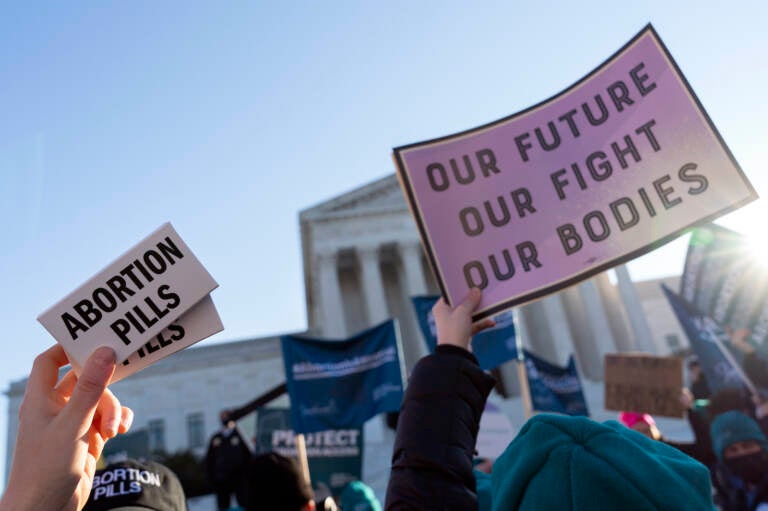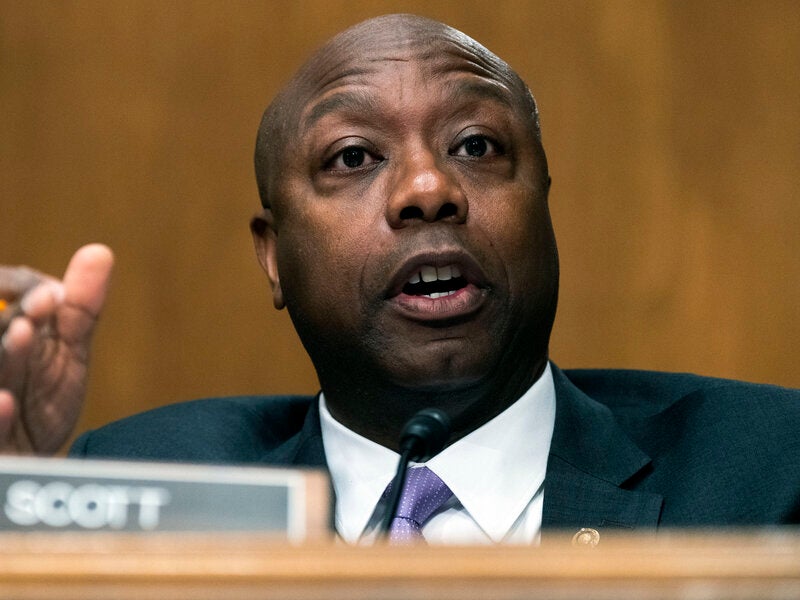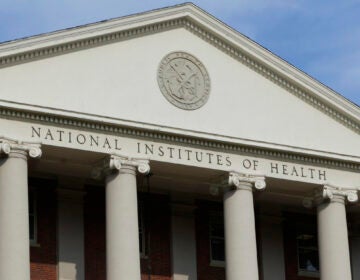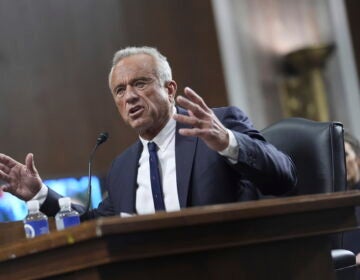People who are denied abortions risk falling deeper into poverty. So do their kids

Abortion rights advocates demonstrate in front of the Supreme Court last December as it heard a case that could strike down the constitutional right to abortion. (AP Photo/Jose Luis Magana)
Like most women seeking an abortion, Brittany Mostiller already had children when she unexpectedly got pregnant again. “I had two young daughters both under the age of 5, sharing a two-bedroom apartment with my sister,” she says.
She’d also just been laid off from her overnight job as a greeter for Greyhound buses. Her unemployment benefits were less than her wages there, and nearly all of them went toward rent and utilities. “I’m not even sure I had a cellphone at that time,” she says. “If I did, it was certainly on and off,” to save money.
Mostiller worried about finding another job while pregnant and then being able to take time off to care for a newborn. But mostly, she knew how expensive it was to have a baby, and she didn’t want to sacrifice the well-being of her two children by having a third she simply could not afford.
As it turned out, she couldn’t afford an abortion either. And in Illinois at that time 15 years ago, abortion was not covered by Medicaid.
Mostiller went ahead with the pregnancy and had to be hospitalized at 32 weeks and then induced a week later. Not long after giving birth to a third daughter, she started work as a cashier but could get only 20 hours a week. Her financial hardships began to multiply.
“I defaulted on student loans that I was navigating,” she says. She’d been studying to be a paralegal but had left without a degree. Within about a year, she also defaulted on credit card payments, which eventually led to her meager checks being garnished. At one point, she juggled three jobs — one of them full time — trying to make it all work. “It was certainly rough.”
Since then, Mostiller has managed to improve her situation, ironically through another unplanned pregnancy. The second time, she discovered a local group that helps poor women pay for abortions, and she now works with the National Network of Abortion Funds. But her worries about falling further into poverty are widely shared among women seeking abortions. And a large body of research proves them right.
Roe v. Wade provided a natural experiment on the economic impacts of abortion
Before the Supreme Court legalized abortion with its Roe v. Wade ruling in 1973, five states and the District of Columbia had already allowed abortion for several years. Caitlin Myers, an economist at Middlebury College, says this provided researchers a natural experiment through which to study the demographic and economic outcomes of women in those states compared with others and then to look at what happened after Roe as well.
Myers says they found profound impacts and were able to document that they were discrete from all the other changes happening in society at the time.
First, legalizing abortion dramatically reduced the number of women and girls who gave birth — and got married — as teenagers. Access to abortion also offered a major boost to women’s economic prospects, “allowing them, in turn, to obtain more education, to enter more professional careers, to avoid poverty,” Myers says. “And also providing those same economic advantages to the children that they parented later.”
In the Mississippi abortion case before the Supreme Court, Myers spearheaded an amicus brief by 154 economists. But she says their findings seem to have been ignored.
During oral arguments in the case in December, Julie Rikelman of the Center for Reproductive Rights argued against Mississippi’s law to ban nearly all abortions after 15 weeks. At one point, she said, “The data has been very clear over the last 50 years that abortion has been critical to women’s equal participation in society.” As she continued, Chief Justice John Roberts interrupted her to ask, “What kind of data is that?” And then interrupted again to say, “Well, putting that data aside …” and asked why 15 weeks was an inappropriate cutoff.
In his leaked draft opinion, Justice Samuel Alito notes that Roe‘s supporters say without access to abortion, “women will be unable to compete with men in the workplace.” He then cites abortion-rights opponents’ “countervailing arguments about modern developments.” These include, he writes, changed attitudes toward unmarried pregnant women, federal and state laws banning discrimination on the basis of pregnancy and “that leave for pregnancy and childbirth are now guaranteed by law in many cases.”
But Myers says this is just not true for most women seeking abortions, who are disproportionately poor and women of color.
“This population of women … lacks access to paid parental leave, lacks access to affordable child care,” she says. And even many who can get child care face challenges scheduling it because “a lot of these women work in what’s called shift work, with very irregular schedules.”

The financial fallout extends to the next generation
Of course, abortion-rights opponents see all this differently. When Treasury Secretary Janet Yellen told a recent Senate panel that overturning Roe would “set women back decades,” she drew a rebuke from Republican Sen. Tim Scott of South Carolina.
“Did you say that ending the life of a child is good for the labor force participation rate?” he asked pointedly. He called it “callous” and “harsh” to frame the “painful reality” of abortion that way.
“As a guy raised by a Black woman in abject poverty,” he said, “I’m thankful to be here, as United States senator.”
But Scott’s success story is not the norm when those who seek an abortion are denied one. Economist Jason Lindo, with Texas A&M University, says the financial fallout extends well into the lives of such women’s children.
“There’s a huge empirical literature showing that there are detrimental effects on these kids’ outcomes,” he says. “When they grow up, they’re less likely to attain higher education themselves, they’re more likely to be involved in crime, have lower adult earnings.”
Research into abortion’s economic fallout continues. The landmark Turnaway Study followed women for a decade and found that those denied an abortion were four times as likely to be living in poverty years later.
And economists have gotten more opportunities for “natural experiment” studies as Texas and a growing number of other states have strictly limited abortion in recent years. One analysis by the Institute for Women’s Policy Research calculates that such measures cost state and local economies $105 billion annually by reducing women’s labor force participation and earnings.
Still, Middlebury professor Myers says if Roe is overturned, “it’s not going to be a return to 1971.”
Based on what has happened so far, she estimates that if half of states impose various abortion bans, about three-quarters of women seeking abortions in those states will still find a way to travel and access abortion in another state. But it will largely be women with means, resulting in “a dramatic increase in inequality of access.” Her own research last year found that even an increase in travel distance of up to 100 miles could prevent 20% of women from reaching a provider.
Myers calculates that in the first year after Roe was struck down, about 100,000 lower-income women would not be able to get an abortion. She says that number could be higher if more places restrict medication abortion by mail and if a backlog of women seeking help in other states leads to long delays.
And again, she and economist Lindo stress that the consequences don’t stop there but extend to the children whom women already have or will have later. They say it’s empirically clear that cutting off abortion access for more women would mean widening already stark economic and racial disparities for generations to come.
9(MDAzMzI1ODY3MDEyMzkzOTE3NjIxNDg3MQ001))




